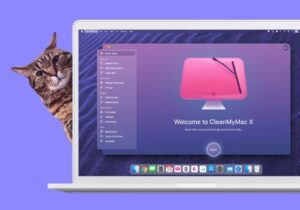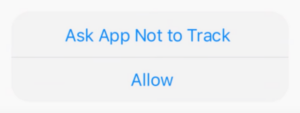What to do when your Mac can’t update
macOS and its smaller security updates are widely announced, here and across many other sites supporting Apple products. What should you do, though, when you know updates have been released by Apple but your Mac can’t find them, or when it tries to install them and fails?
Before Sequoia, almost all software updates are normally fetched by Software Update in System Settings/Preferences, or alternatively at the command line by softwareupdate, also used by my free SilentKnight. They work through the softwareupdated service that should be running in the background. If you run a local Content Caching server, then softwareupdated should automatically connect to that and ask it for the update; otherwise, it tries to connect to Apple’s software update servers over the internet. Although this chain is usually reliable, it has several points of weakness.
Sequoia brings greater complexity, in that one its most important security data updates for XProtect is intended to be delivered over a CloudKit connection with iCloud, although those updates can still arrive from Software Update as well. However, when delivered through softwareupdated the XProtect bundle is installed but not ‘activated’ for XProtect’s use. To do that, open Terminal and enter the command
sudo xprotect update
then authenticate with your admin password when prompted.
Update not found
You open Software Update or SilentKnight, and are told that your Mac is up to date, although it’s still running the older version of macOS, or hasn’t installed a smaller security update.
The most likely reasons for this include:
Apple’s software update servers are in heavy demand, and are temporarily refusing new connections. As Apple tends to release a lot of updates at once, this isn’t uncommon, particularly in the autumn/fall with the new versions of macOS and others. The only solution is to try again later, although sometimes you can kickstart the process by running SilentKnight or softwareupdate. Apple provides a page showing the status of its many internet services, where these are listed as macOS Software Update, but transient problems due to load seldom get reported there.
Your Mac, or its Content Caching server if you’re running one, can’t connect to Apple’s servers because of a network fault. Again the only solution is to try again later, in the hope that the fault has been fixed.
softwareupdated or your Content Caching server aren’t working properly. This is normally rectified by restarting that Mac and trying again once it’s up and running. In some cases, it can require that the client Mac is started up in Safe mode before the update becomes available.
If an update has only just been announced, then the software update servers that your Mac connects to may not be offering that update yet. Availability around the world isn’t instant, and often you’ll find that an Apple silicon Mac can find an update and install it readily, while an Intel Mac on the same network may be unable to discover the same update for another hour or more.
Note that, unless an update is listed as being available, you can’t force it by trying to install the update using its label, either in softwareupdate or SilentKnight.
For updates to XProtect in Sequoia, try opening Terminal and entering the command
sudo xprotect check
then authenticating with your admin password when prompted. This should force XProtect management to look for an update. If it finds one, then entering
sudo xprotect update
should download it from iCloud and install it. Note that this command is only available in Sequoia. For further information, man xprotect tells you as much as Apple lets you know.
Update fails to install
This is easiest to detect when you use SilentKnight, which will report the update is available, then when you try to install it, you’ll see an error message in the scrolling text window reporting that installation of the update failed, and the component being updated won’t change to the new version number.
If the Software Update pane shows an error, that should provide similar information. Otherwise, to download and install waiting updates you can type
softwareupdate -ia –include-config-data (or in El Capitan sudo softwareupdate -ia)
in Terminal, to see the same messages shown by SilentKnight, as that’s also the tool it uses to obtain waiting updates. If you know your way around the Unified Log, you should discover parallel entries there.
By far the most common cause for failure to install updates like this is that something has gone wrong with softwareupdate or softwareupdated, best corrected by restarting your Mac and trying again. If it still doesn’t work, start up in Safe mode and try from there. One of the primary purposes of Safe mode is to resolve problems with updates and updating, whether they’re full macOS updates or small security data updates like XProtect.
If you’re not running a local Content Caching server and still can’t get the update to install, all you can do is wait an hour or two and try again.
Content Caching problems
If you’re running a local Content Caching server, then the problem could now rest with the copy of the update stored in its cache. When the local server downloaded the update from Apple’s software update servers, it may have become damaged. Once that damaged copy has been put into your local server’s cache, that’s the update that it will serve to all your local Macs when they connect to it to obtain the update.
What can make this worse is that, even if you do manage to get the Mac running the Content Caching server to update successfully, that doesn’t mean that it will replace the damaged copy in its cache, which may continue to deliver that same damaged version to all the Macs that try connecting to it.
To confirm this, you can inspect the log, as I’ve described here.
The most immediate solution, which should allow all your local systems to update correctly, is to turn the Content Caching service off in Sharing, shut down the Content Caching server, or isolate that server from the rest of the network. Then update all your other systems, which should download fresh copies of the update directly from Apple’s servers. Once that’s done, you can bring the server back up in Safe mode and try updating it there.
For a period of over six months in 2022-23, updates for XProtect and XProtect Remediator obtained through Content Caching servers frequently failed to install correctly. In that time, the simplest solution was to disable the server before trying to download and install those updates, and to enable it again once all updates had been completed. It’s still not clear where that problem occurred, but it has since been fixed and updates should be reliable now.
I don’t know any way to remove individual updates from the Content Caching server. Apple’s command tool for its maintenance, AssetCacheManagerUtil, only knows how to flush whole caches, using
sudo AssetCacheManagerUtil [flushCache|flushPersonalCache|flushSharedCache]
where the commands set the cache to be flushed:
flushCache flushes the entire content cache.
flushPersonalCache flushes all personal (iCloud) content.
flushSharedCache flushes all shared (non-iCloud) content.
Flushing a large cache may not be what you want to do. So long as there’s no storage problem and the update affected was most probably supplied broken, there shouldn’t be any harm in leaving it where it is.
In Sequoia, XProtect’s new updates delivered from iCloud are likely to bypass Content Caching servers altogether, although Apple hasn’t clarified that yet.
Nothing helps
If you’ve worked your way through to the end here but still haven’t solved the problem, contact Apple Support, who can escalate it to someone who can hopefully do something about the problem.
Further reading
Repeated installations of the same updates
How security data updates should work




